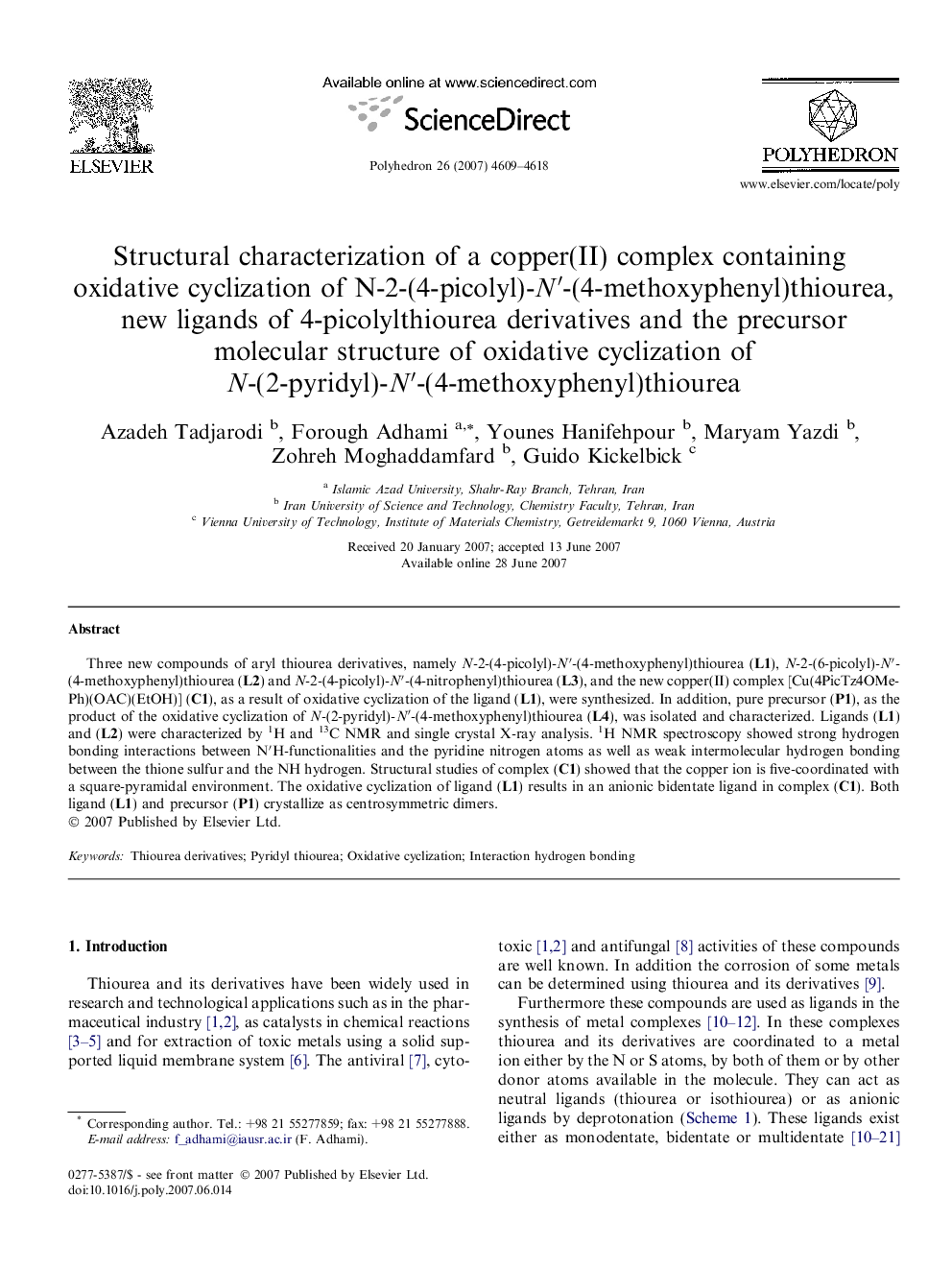| Article ID | Journal | Published Year | Pages | File Type |
|---|---|---|---|---|
| 1338346 | Polyhedron | 2007 | 10 Pages |
Three new compounds of aryl thiourea derivatives, namely N-2-(4-picolyl)-N′-(4-methoxyphenyl)thiourea (L1), N-2-(6-picolyl)-N′-(4-methoxyphenyl)thiourea (L2) and N-2-(4-picolyl)-N′-(4-nitrophenyl)thiourea (L3), and the new copper(II) complex [Cu(4PicTz4OMePh)(OAC)(EtOH)] (C1), as a result of oxidative cyclization of the ligand (L1), were synthesized. In addition, pure precursor (P1), as the product of the oxidative cyclization of N-(2-pyridyl)-N′-(4-methoxyphenyl)thiourea (L4), was isolated and characterized. Ligands (L1) and (L2) were characterized by 1H and 13C NMR and single crystal X-ray analysis. 1H NMR spectroscopy showed strong hydrogen bonding interactions between N′H-functionalities and the pyridine nitrogen atoms as well as weak intermolecular hydrogen bonding between the thione sulfur and the NH hydrogen. Structural studies of complex (C1) showed that the copper ion is five-coordinated with a square-pyramidal environment. The oxidative cyclization of ligand (L1) results in an anionic bidentate ligand in complex (C1). Both ligand (L1) and precursor (P1) crystallize as centrosymmetric dimers.
Graphical abstractSome aryl thiourea derivatives, such as N-2-pyridine-N′-arylthioureas, are able to be oxidized in the presence of a suitable oxidant, but this chemical change depends on the different groups in the aryl ring. Respectively, electron donating and withdrawing groups support and prevent this reaction. The product can also act as a ligand.Figure optionsDownload full-size imageDownload as PowerPoint slide
